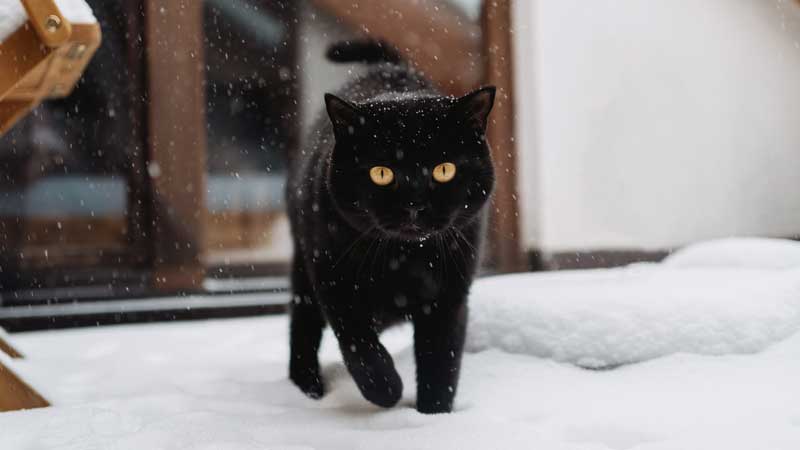What Temperature is Too Cold for Cats?

Best Answer:
The cold tolerance in each cat depends on their age, breed, weight, and fur, however, an average temperature of 45 degrees Fahrenheit or equivalent to 7.22 degrees Celsius is already considered too cold for cats. If the temperature goes down to 32 degrees Fahrenheit and below, they might suffer from cold-related diseases, such as hypothermia and frostbite.
Based on recent studies, the recommended ambient temperature for cats is 80 degrees Fahrenheit for stray cats and those who are not sheltered, while for those pets in sheltered housing is above 50 degrees Fahrenheit.
Factors that affect cats' Tolerance to Cold
While there is a recommended average temperature for cats, there are several factors that affect our pets' tolerance and reactions to a cold temperature which are the following:
1. Age
Older cats suffer more during a cold temperature compared to those cats who are in their prime years. The body of senior and sick cats cannot regulate their temperature well during cold weather. Likewise, about 90% of senior cats suffer from arthritis making them more vulnerable during cold weather as their joint pains get worse.
2. Type of Coat/Breed
Breeds of cats who come from places with cold climates can survive in cold temperatures naturally compared to those who come from warmer places, such as those who originated from tropical countries. Likewise, those who have thicker coats can withstand cold better compared to those who only have single-layered coats.
The color of the coat is also one of the factors that affect the tolerance of cats to cold. Those who have dark coats can absorb a significant amount of heat from the sunlight compared to those light-coated cats.
3. Size and Weight
Cats who have smaller bodies are less tolerant to cold compared to those who have bigger bodies. Just like humans, smaller or thinner cats have lesser fats which serve as their natural body insulator.
4. Environment
The living environment of a cat is also a big factor when it comes to their tolerance to cold. Those cats who are used to staying outside have higher cold tolerance unlike those who stay indoors or those who are in a sheltered place. Cats who are not used to going outdoors may have the tendency to panic during cold weather which may prevent them from protecting themselves, which may also lead them to suffer cold-related diseases.
What Happens When Cats are Exposed to Extremely Cold Temperature?
Hypothermia and frostbite are the most common diseases that a cat may suffer when exposed to a very cold temperature for a long time.
Hypothermia is a serious condition with symptoms that include violent shaking, slow heart rate, and shallow breathing that may cause a cat's death when not treated immediately. Frostbite, on the other hand, includes symptoms of discoloration of skin, blisters, and swelling in the different parts of the body.





